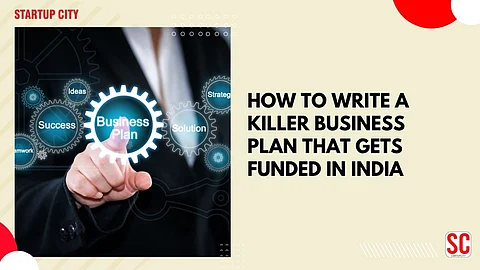

“If you fail to plan, you’re planning to fail.”
Benjamin Franklin
You’ve got a game-changing startup idea. You know your product can solve a big problem. Your friends and early users love it. But now comes the big leap — funding.
You need capital. You reach out to investors. They ask you for your business plan. You send it. Days pass. No response.
Sound familiar?
You’re not alone.
I’ve seen this story play out with countless founders. They have the passion, the product, the persistence — but what they lack is a killer business plan that gets funded.
Let me show you how to change that.
In the era of pitch decks and 10-slide presentations, you might wonder — "Do investors still care about business plans?"
Yes. More than ever.
Especially in India, where funding is becoming more competitive and due diligence is tightening, investors want to see that you’ve done your homework. A solid business plan:
Demonstrates your strategic thinking
Shows your financial foresight
Reduces investor risk
Helps align your team
Here’s the truth: A compelling business plan won't guarantee funding, but a bad one will almost always kill your chances.
In my experience, most founders write business plans like a college essay. Dense. Formal. Forgettable.
But investors are looking for clarity, credibility, and confidence.
Ask yourself:
Does my plan show how I’ll make money?
Do I clearly explain why this matters now?
Am I realistic about my financials?
Have I explained why I’m the one to do this?
Here’s a simple, proven structure that works — especially in the Indian startup ecosystem:
This is your hook. In one page, answer:
What problem are you solving?
What’s your solution?
Why now?
How will you make money?
How much funding are you seeking?
Pro Tip: Even if investors read nothing else, this should compel them to call you.
Tell a story. Make them feel the pain. Use data to back it up.
For example: “India loses ₹20,000 crore annually due to food supply chain inefficiencies” — that's a real opportunity.
What makes your product unique? Include screenshots, diagrams, or MVP validation.
Bonus: Share a quote or testimonial from an early user or customer.
Investors love big markets. But they love well-defined markets even more.
Use TAM-SAM-SOM analysis:
TAM: Total Available Market
SAM: Serviceable Available Market
SOM: Serviceable Obtainable Market
Stat: As per Inc42, India had over 1,12,718 DPIIT-recognised startups by March 2024 — and funding has crossed $140 billion cumulatively.
Be crystal clear: How do you make money?
Use visuals if possible. Examples:
Subscription
Transaction-based
Freemium
Licensing
Avoid jargon. Simplicity is power.
Show you can acquire customers — affordably and scalably.
Outline:
Target segments
Marketing channels (digital, B2B, partnerships)
CAC (Customer Acquisition Cost) and LTV (Lifetime Value)
Don’t say, “We have no competition.” It’s a red flag.
Instead, use a competitor matrix. Focus on:
Your moat
Your pricing
Your USP
Remember: Investors back defensible businesses, not copycats.
What have you achieved so far? Use numbers.
Users acquired
Revenue
Partnerships
Media mentions
Show momentum.
Quote: “Investors bet on traction, not perfection.”
Provide 3-5 year projections:
Revenue
Expenses
EBITDA
Burn rate
Break-even point
Be ambitious but grounded. Include assumptions.
If you’re pre-revenue, show unit economics and customer funnel projections.
This is where most founders fumble.
Be specific:
How much do you want?
What will you use it for?
What’s your runway?
Are you offering equity? At what valuation?
Don’t just ask for money — show how it’ll unlock growth.
Too vague or too technical
Unrealistic financials
Ignoring competition
Lack of a clear monetization strategy
No exit plan
If you're guilty of any of these, it’s time for a rewrite.
Back in 2014, Dunzo started as a WhatsApp group fulfilling errands in Bangalore. But when they pitched their business model — hyperlocal task fulfillment — they showed real traction, operational logic, and scalability potential.
That’s what caught Google’s attention, leading to a $12 million investment in 2017 — the first direct investment Google made in an Indian startup.
Lesson: Clarity + Hustle + Scalability = Investor Interest
Get feedback from mentors or advisors
Use visuals and infographics
Run it through Grammarly or Hemingway App
Print it and read it out loud — you'll catch more than on-screen
Create a 1-page summary and a detailed version
Need help? Consider reaching out to a startup consultant or mentor through platforms like StartupIndia or TiE.
Here’s the secret…
The best business plans don’t just convince investors — they sharpen founders.
Writing a killer business plan forces you to think bigger, plan smarter, and execute faster. Whether you’re raising seed capital or preparing for Series A, a well-written plan is your ultimate weapon.
So grab that idea. Sharpen your vision. Start writing.
Because the investors are watching — and they’re ready to fund the next big thing. Why not you?
Have questions about writing your own business plan? Struggling with a funding pitch? Drop a comment or message us at StartupCity India — we’re here to help you thrive.